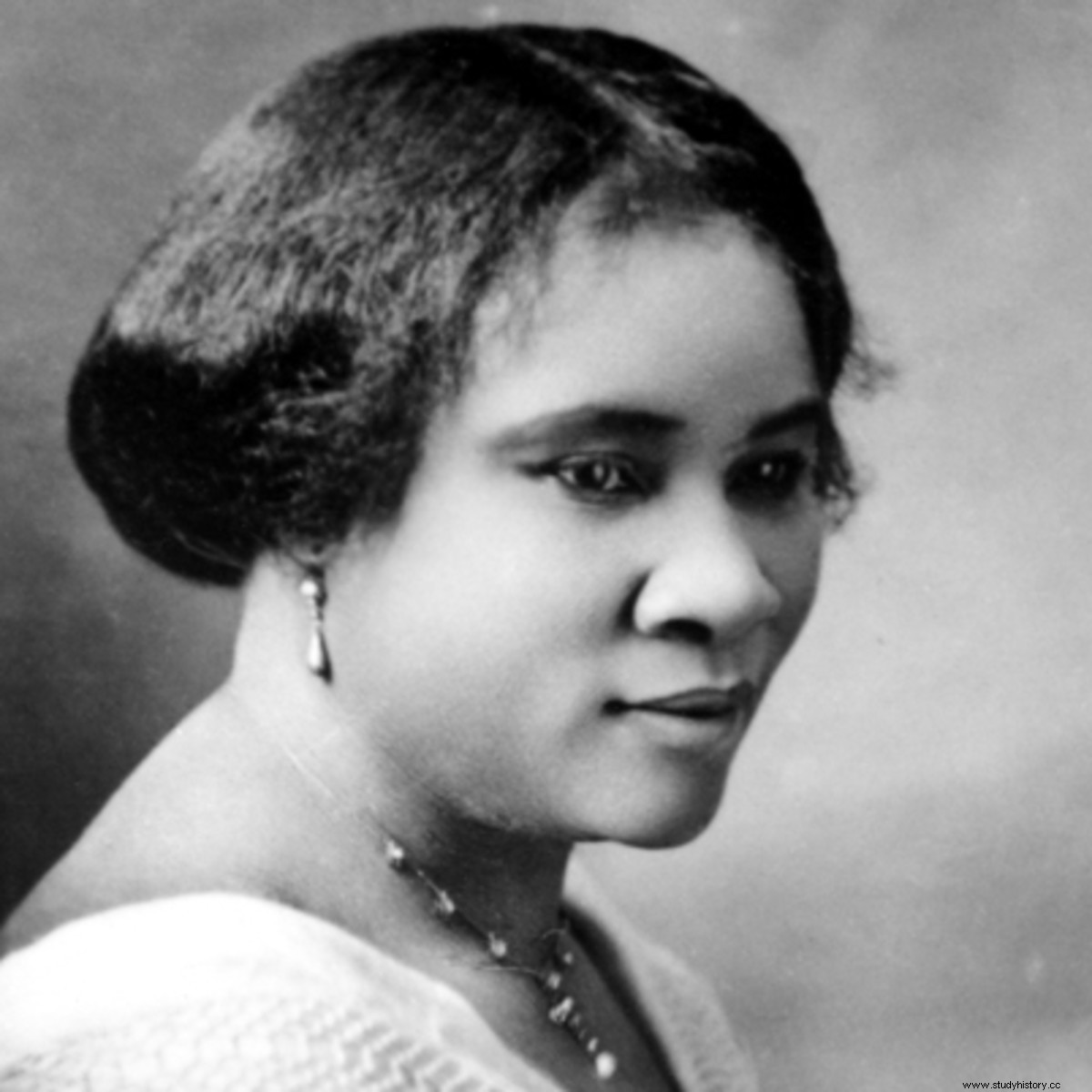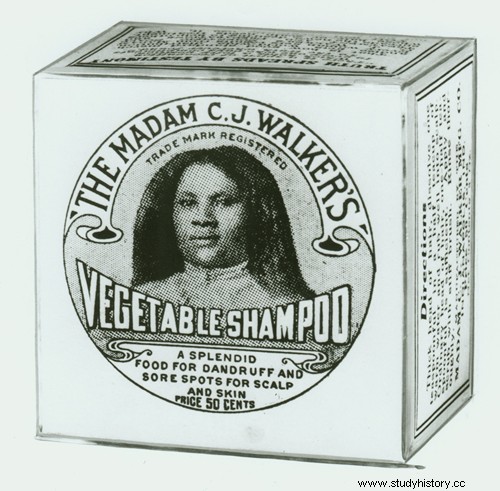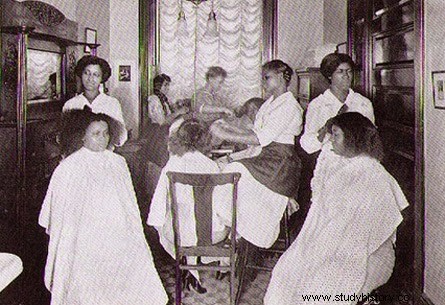I understand that in the 19th century the fact of including "multimillionaire" and "daughter of slaves" in the same phrase may seem like a toast to the sun or a historical license. Well no, there was a woman, Sarah Breedlove , that despite being the daughter of slaves, she was a successful businesswoman and became "the first billionaire in the United States".

Sarah Breedlove
Sarah was the second of six children, and the first freeborn, of Owen and Minerva Breedlove, a Mississippi cotton plantation slave couple. In 1887, barely 19 years old, Sarah already had a very hard life experience on her shoulders:she was orphaned at 7 years old; she since she was 10 she working as a domestic worker; she got married when she was 14, fleeing from her sister's house where her brother-in-law mistreated her; she had a daughter and was left a widow. Although she would remarry twice more, they would have no more children. That her daughter Lelia she could receive the education that she did not have she became an obsession… and for that she was going to need money. She moved to St. Louis, Missouri where her four younger siblings lived and she got a job as a laundress. Saving what she could, she got her daughter to go to college – And we're talking laundry wages! -.
After almost 18 years working with chemicals to wash clothes, a poor diet - her daughter was the priority - and aggressive treatments to tame her hair, Sarah began to realize that she was losing hair. She spoke with one of her brothers who was a barber and realized that it was a more frequent problem than she thought, and that many African-American women hid it with the typical headscarves. That concern of hers led her to try Annie Minerva Tumbo's exclusive hair products for African Americans , and even she became a commercial of said products. As a commercial, she had access to try all the cosmetic variety, but she realized that its effectiveness was relative. So, she decided to experiment on her own and with the advice of her brother she came to create her own line of products. She quit her job as a salesperson and started selling her new line of products door to door, and it didn't go too badly. Even so, it was difficult to gain a foothold in the San Luis market, since her direct competition, Annie Minerva Tumbo, was better known and, moreover, had its headquarters in the city itself. So, mother and daughter decided to move to Denver and start their business venture there. Following the same ritual, door to door, they began to sell… until the journalist Charles J. Walker crossed their path. . In addition to becoming her third husband, from whom I take her last name, Charles had a decisive influence on the change in the business model:he unified his product line under the brand “Madame Walker “And she started advertising her products in the local media. The seed of success was planted, but Sarah did not stop watering it and taking care of it. She kept traveling to different cities in the southern states promoting her “Hair Grower conditioner. ”-In addition to strengthening her hair, she helped tame the typical curls of African Americans- doing demonstrations in houses, churches and clubs. In 1910 he would make the definitive leap by moving his base of operations to Indianapolis -a strategic place due to its communication networks- where he set up a factory to make his products -until now he was in charge of third parties-, a hairdressing salon and a business school ( Walker School ).

While her husband and daughter took care of the manufacturing and distribution, she focused on training the women who, spread out across the country, would promote and sell her products. She covered the national market with advertising and commercials, in 1913 she decided to make the international leap and toured several countries in Central America and the Caribbean. Around her, she organized annual conventions at the state and national level to improve the sales techniques of the commercials ( Walker Agents ), share her experiences and reward the best.

And this is the story of "the most successful businesswoman of her time" and the first woman in the US who, starting from scratch, became a millionaire thanks to her work.
If I have achieved something in life, it is because I have been willing to work hard.
Although with this background she would be enough to be the protagonist of the story, Sarah's life goes further. It is also the story of a caring, altruistic woman committed to her race and her gender. Aware of the social and labor limitations of black women of the time, Sarah used her professional success and her money to achieve economic independence for thousands of African-American women whom she employed in her factories, offices or as agents. He made large donations to schools, orphanages, nursing homes, associations that fought for the rights of African-Americans, created scholarships for underprivileged girls... His involvement with American society, his race and his gender was not only economic, he also actively participated giving lectures and talks for equal rights and opportunities, and even met with President Wilson Woodrow.
This is the greatest country under the sun. But we must not let our love for country, our patriotic loyalty, lead us to stop persevering in our protest against inequality and injustice.
After her death, at her house in New York on May 25, 1919, her daughter Lelia followed the instructions left in her will and donated an important part of her inheritance to associations and schools. with whom she had collaborated in life. Lelia, following in her mother's footsteps, became one of the forerunners of the so-called Harlem Renaissance , a cultural and social explosion of African-American arts.
